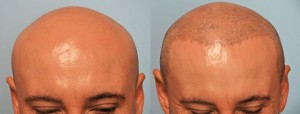Scar tissue can form anywhere on the body and this includes the scalp. When scars form within the hairy regions of the body, the tissue becomes damaged and the scar can also destroy the hair follicles. A small scar from an injury or acne, surrounded by healthy tissue, may not be visible to others since it can hide within the surrounding hair follicles. People prone to severe acne or psoriasis or have had significant head injuries or surgery may have regional hair loss. This happens because the fibrous connective tissue that makes up a scar has limited blood flow and restricts healthy hair growth within the scar. Multiple scalp scars, or even one scar, can permanently destroy countless hair follicles and leave a person with noticeable visibility of the scalp. Thankfully, there are several ways to treat scars on the scalp and lessen their visibility.

- Scalp Acne Treatment
Although acne on the scalp may seem irrelevant, it is one of the main causes of hair loss because acne is infected glands in the skin. They can become inflamed, itchy and burst at the surface. The lesion is then replaced by scar tissue. When someone has recurring acne outbreaks, the skin is unable to heal properly and excessive acne scarring can occur and cause baldness. It is best to treat acne issues as soon as possible using an acne wash containing salicylic acid either 2-3 times a week or as directed by a dermatologist. If acne scars already exist, there are some natural treatment options available.
- Take Vitamin E
Vitamin E has therapeutic properties to increase the rate of wound healing. It is rich in collagen production and can be a natural means to maintaining healthy hair and skin. Vitamin E is full of antioxidant qualities which make it popular for use in beauty products as well as highly recommended by dermatologists. It can help prevent acne and keep scars at bay by promoting a healthy flow of oxygen and blood to the scalp.
- Scalp Massage
Dead skin cells can form all over the body and they clog the pores and accumulate on scars. Massaging the scalp can help remove dead skin and stimulate blood circulation. Scalp massages can reduce scar tissue build-up and keep the surrounding skin healthier.
- Itching Solutions
Scar tissue can have some unpleasant side effects such as inflammation and itchiness. In many cases, itchiness can become unbearable and cause the scar to become worse than it already was. Keeping the scalp clean and applying a steroid ointment can help reduce itching and allow the skin to heal more naturally. Depending on the type of scar, certain injections may be beneficial with alleviating inflammation, itchiness and making a raised scar flatter.
- Hair Extensions and Lasers
Hair extensions can hide thinning or bald patches caused by scarring. Since treatments can take time to improve the appearance of the scar, hair extensions can provide adequate coverage at an affordable cost. In some cases, the scar may not be receptive to non-invasive treatments and may not improve. Therefore, the patient may need to consider alternative treatment options such as laser treatments to reduce the appearance of the scar.
- Hair Transplant
When scars are left untreated or the skin and hair follicles have been severely damaged, the hair may never regrow. Therefore, some patients turn to a surgical method such as a hair transplant. A hair transplant can reduce the scar and make it less noticeable thanks to the implanted hair follicles. The donor hairs are taken from the back of the patient’s head so any scarring from the transplant technique will be hidden within the patient’s natural hair.
SP


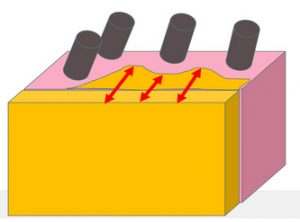 Scar tissue and the transection of the lower portion of hair follicles, on the edge of the scar, are what cause the lack of hair in the scar.
Scar tissue and the transection of the lower portion of hair follicles, on the edge of the scar, are what cause the lack of hair in the scar. 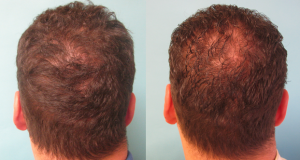

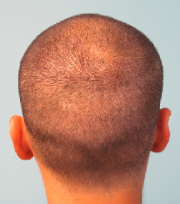

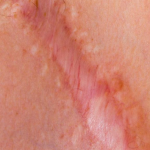 Scarring is the result of tissue fibers replacing normal skin after a trauma. Scarring can result from surgery, burns, open wounds, or any other abrasion of the skin. Scars are caused when the deep thick layer of skin, also known as the dermis, is damaged. Once trauma occurs, the body forms a collagen fiber which aids in the healing process of the wound and causes a scar. Because the tissue is a different consistency and quality the scar becomes visible.
Scarring is the result of tissue fibers replacing normal skin after a trauma. Scarring can result from surgery, burns, open wounds, or any other abrasion of the skin. Scars are caused when the deep thick layer of skin, also known as the dermis, is damaged. Once trauma occurs, the body forms a collagen fiber which aids in the healing process of the wound and causes a scar. Because the tissue is a different consistency and quality the scar becomes visible.